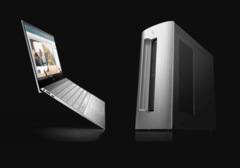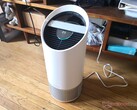For many people, working from home is already part of their routine. Often, in these instances too, their work has either already set them up with the tools needed to complete the task remotely or it is part of their workplace salary packaging agreements. However, there are going to be many people out there for whom working from home will be something that they are doing for the first time, and they may not be quite as ready to get started. In fact, consumer electronics retailers have reported a spike in sales of desktops and laptops as the spread of the SARS-CoV-2 virus has extended its reach beyond China bringing COVID-19 to the rest of the world. So which device do you choose: A desktop computer setup or a laptop computer setup? Based on the most recent sales data, people are opting for laptops over desktops at around the rate of 2:1. When you add tablets like the iPad, Surface Pro, and Android slates to the equation the preference of mobile devices over fixed ones increases to a ratio of 4:1. However, while the clear preference is to go for a mobile device, there are also some advantages in going for a desktop setup that you can only approximate with a mobile set up and this might suit your preferred style of working. ↺

For many people, working from home is already part of their routine. Often, in these instances too, their work has either already set them up with the tools needed to complete the task remotely or it is part of their workplace salary packaging agreements. However, there are going to be many people out there for whom working from home will be something that they are doing for the first time, and they may not be quite as ready to get started. In fact, consumer electronics retailers have reported a spike in sales of desktops and laptops as the spread of the SARS-CoV-2 virus has extended its reach beyond China bringing COVID-19 to the rest of the world.
So which device do you choose: A desktop computer setup or a laptop computer setup? Based on the most recent sales data, people are opting for laptops over desktops at around the rate of 2:1. When you add tablets like the iPad, Surface Pro, and Android slates to the equation the preference of mobile devices over fixed ones increases to a ratio of 4:1. However, while the clear preference is to go for a mobile device, there are also some advantages in going for a desktop setup that you can only approximate with a mobile set up and this might suit your preferred style of working.
Desktops - Pros and Cons
Although there is a lot of buzz around mobile devices these days, and rightly so, there are still many things to recommend about having a desktop setup when working from home. The first is the sheer convenience and reliability of having your workstation set up and ready to go whenever you are. This means all you need to do is turn on the power button on your desktop and before you know it you are up and running. You don’t need to plug anything in and hope it all works – it (typically) just works.
Secondly, when you have a desktop computer setup, you usually also have a pretty decent sized display to work with. Most desktop monitors are 21.5-inches or larger meaning that you have more space to work with multiple windows and applications. From a productivity perspective, this can really help you get more work done, more quickly and easily. If your budget can stretch to it, most desktop systems can support at least two monitors – there is no such thing as too much screen real estate.
Thirdly, with everything set and connected the first time, this means no need to muck around connecting peripherals like printers, speakers and hard drives. This makes life a lot easier on a number of fronts. It also lends itself to creating a desktop workspace that can be organized once and then kept clutter free. Although this can vary depending on how disciplined you are, a good working-from-home tip with a desktop workspace is to avoid getting lazy and leaving things that aren’t work-related in your immediate workspace.
Fourthly, you can typically get a lot more bang-for-your-buck with a desktop setup. This means more performance, larger screen, more storage and more money left over for peripherals. The only thing else you really need to consider is whether you opt for a desktop setup that comes in separate components or a setup that comes with all the main components in the one box known as all-in-one (AIO) desktop computers like Apple’s iMac or the many excellent Windows alternatives from the likes of Dell, Asus, HP and others.
The biggest con, when it comes to desktop setups is that they are, naturally, not mobile. Some AIOs can be moved around a house relatively easily, but for any greater flexibility or ease of use anywhere, you will need to look at a laptop.
Laptops - Pros and Cons
While laptops don’t generally offer the same performance-per-dollar spent, they do offer much greater flexibility than with a desktop arrangement. If you are one of those people who doesn’t like being bound to a particular spot to work, day-after-day, then a laptop is likely going to be your best working-from-home choice. You can enjoy a quasi-desktop setup with a laptop in that you can set it up with a single dock that you connect your monitor and peripherals to while needing only a single cable to connect to your laptop. This can also allow you to easily add one or two additional desktop monitors, but this naturally continues to add to the cost.
However, when you get sick of working at your desk, it is very easy to disconnect and take your laptop to another room in the house or to a nice spot on the balcony or even in the backyard. This brings us to another advantage of having a laptop, particularly one with its own cellular connection built in. It allows you much greater freedom to roam from a connectivity standpoint (even if you are forced to tether it to your smartphone connection) and stay connected or entertained away from your desktop. Eventually, when the COVID-19 crisis comes to a conclusion, you will also be able to get things done in a café or library as well. Video conferencing with built-in webcams is also easy.
The biggest drawback about laptops is that without the added cost of buying a dock and desktop monitors, the screen real estate for multitasking is typically going to be limited to any size between 12 inches and 17 inches. Even if you do go ahead and add a dock and monitor/s, getting everything to work perfectly every time you hook up to the dock can be hit and miss. Sometimes you can end up wasting time rebooting to make sure one or both external monitors work, for example. Unless you’ve bought a gaming laptop, you might also need to consider the additional expense of a Thunderbolt 3 graphics enclosure (provided your laptop features the port) and desktop GPU/card if your workflow is graphics intensive. While cool, it is yet another significant expense you will have to factor in.
Conclusion
Ideally, it would be nice to have both a fixed desktop setup and a laptop. With the cloud these days, switching between a desktop and laptop from a work continuity perspective is a snap, particularly for Office-style productivity. However, if your workflow requires lots of computing power, lots of hard drive space, and lots of screen real-estate like working with video or CAD files, the desktop solution is going to be your best bet. Also, if clean consistent workspaces are your thing, desktops might still be the way to go. For everyone else, there is a good reason why sales of laptops outnumber desktops by at least 2:1 these days.


 Deutsch
Deutsch English
English Español
Español Français
Français Italiano
Italiano Nederlands
Nederlands Polski
Polski Português
Português Русский
Русский Türkçe
Türkçe Svenska
Svenska Chinese
Chinese Magyar
Magyar



